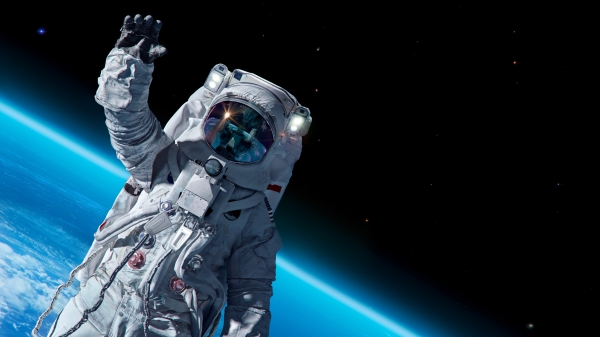People work to advance technology, often for the benefit of safety and security. But some may use that same technology to infringe on human rights, collect data on people without their consent, or take advantage of those in vulnerable situations.
So what happens when people take control of that technology and use it to better their communities? Moreover, what is the role of the ethics and policies surrounding these emerging technologies?
Lindsay Smith, an assistant professor from Arizona State University’s School for the Future of Innovation in Society, is working to find answers. She’s just received a prestigious honor to launch her research on technologies, human rights and security at the border. She has been awarded the Faculty Early Career Development (CAREER) award from the National Science Foundation. The award supports the development of early-career faculty who are making significant impacts in their fields and leading advances in the mission of their department. She is the first faculty member at the School for the Future of Innovation in Society to receive the award.
“I feel incredibly honored to have been chosen,” Smith said.
Smith will be studying the technologies used on the U.S.-Mexico border and how people are using them to create their own systems of safety. By looking at technologies that have applications for both security and human rights, she is trying to understand how they were created and how the local populations have adapted these technologies for their own needs.
“We’re all incredibly proud of Lindsay’s scholarship, and the research and teaching agenda that the CAREER award will support. It will be a great benefit not only to students who get to work with her on the research but also to those who encounter her in the classroom,” said Dave Guston, Foundation Professor and the school's founding director.
Technology has a big presence at the border. Facial recognition, fingerprinting, iris scanning and drones have recorded data on people who are crossing. However, the same people exploited by these technologies are using them to their own ends. Isotope analysis identifies the remains of those that died during border crossings.
Community activists are flying drones with facial recognition software to find and rescue kidnap victims. Despite not being designed with that purpose, people are finding ways to use technologies to benefit them. Smith hopes her research can lead to a border system of ethics for technology.
“What kind of politics and ethics do we need to make sure that the most vulnerable people on the planet are not made additionally vulnerable by emerging technologies? How do we create a social system around the safe use of that technology, and integrate it into other systems of resilience and healing for communities?”
Smith is also researching how these same technologies could be used in years to come, stating that the U.S.-Mexico border is often a test site for future technologies to which we could all one day be subject.
“If we look at how our most vulnerable people on the planet are treated, we get a sense of how we may be living in 10 years,” Smith said.
“Lindsay’s award also shows the strength and wisdom of the approach ASU has taken to hiring faculty around so-called “Southwest borderlands” issues,” Guston said. “You can recruit new faculty members around properly chosen, focused interests, and they can do work recognized at the highest levels.”
As a medical anthropologist, Smith has spent her career researching how social and political interests, particularly human rights, can drive technology. She earned her PhD in anthropology from Harvard University, working with advisers Sheila Jasanoff and Arthur Kleinman, and then went on to work as a postdoc fellow at the University of California, Los Angeles with adviser Hannah Landecker. She has also earned several grants, including one researching the use of forensic DNA across the Mexican borderlands, working with Vivette Garcia Deister.
“I’ve always been really interested in how we can use new and novel technologies for the interest of communities,” Smith said. “What happens when we decide to take science or technology and transform it toward our own goals?”
One of her first projects was in Argentina, working with Grandmothers of the Plaza de Mayo, a human rights organization using DNA technology to find children who were stolen and illegally adopted during the Argentine dictatorship. She has also worked in Peru and Guatemala, researching how communities are using technology in postconflict settings to find missing loved ones or identify bodies.
Smith believes taking these technologies and using them in ways that were not originally intended could have a positive impact on happiness and well-being.
“I think that when we take technology and use it to create communities or build the projects that we need, that has a protective effect on our mental health,” Smith said. “Let’s all become hackers of our technological lives and build the world we want, instead of helping build the world that other people envision.”
More Science and technology

Brilliant move: Mathematician’s latest gambit is new chess AI
Benjamin Franklin wrote a book about chess. Napoleon spent his post-Waterloo years in exile playing the game on St. Helena. John…

ASU team studying radiation-resistant stem cells that could protect astronauts in space
It’s 2038.A group of NASA astronauts headed for Mars on a six-month scientific mission carry with them personalized stem cell…
Largest genetic chimpanzee study unveils how they’ve adapted to multiple habitats and disease
Chimpanzees are humans' closest living relatives, sharing about 98% of our DNA. Because of this, scientists can learn more about…
